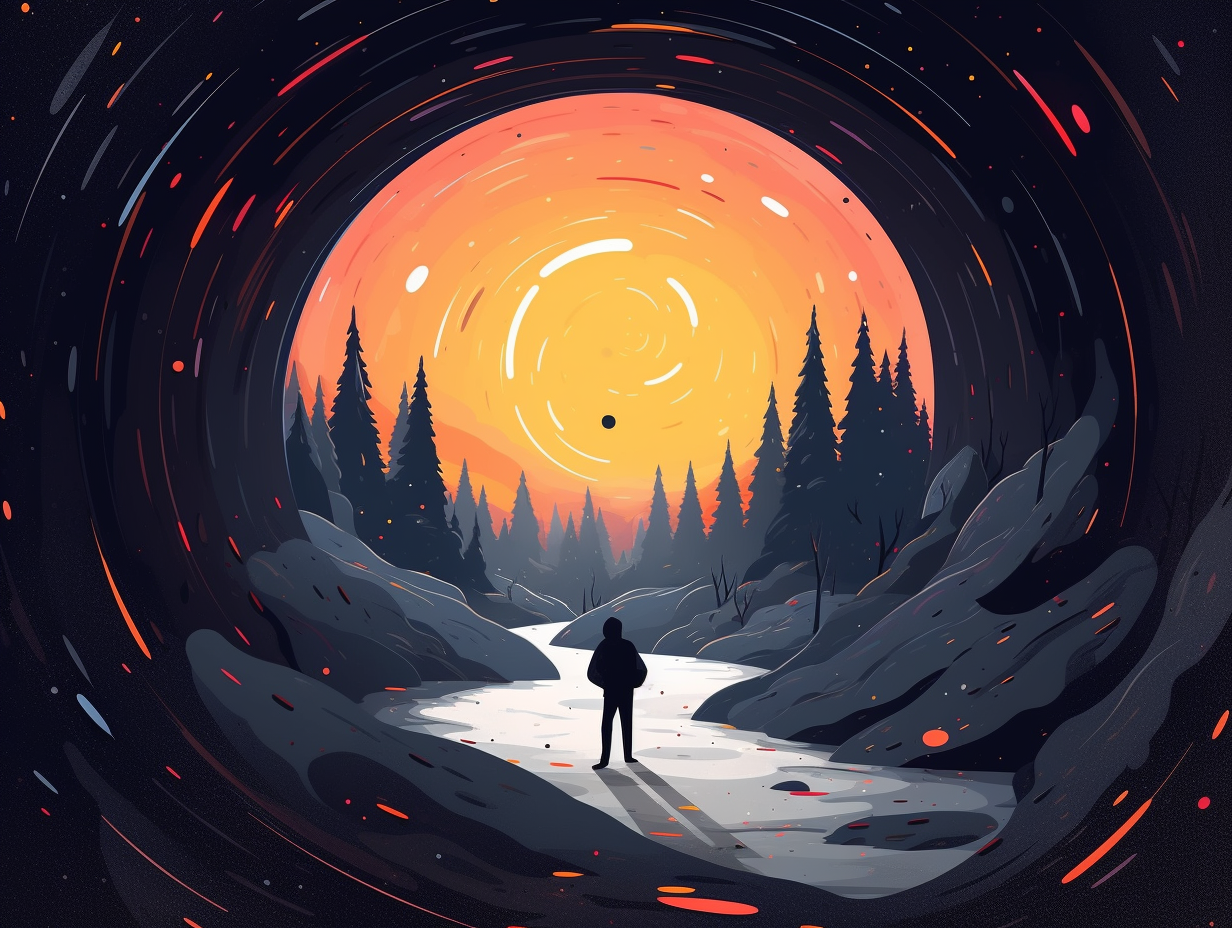Discover the Cosmos: Top 14 Astonishing Fun Facts About the Universe You'll Love

1. Galactic Senior Citizen Dating
Once upon a galactic dream, our cosmic protagonist found itself dating a senior citizen 32 billion light-years away, and oh, the stardust that ensued: GN-z11 is the oldest and most distant galaxy observed, seen just 400 million years after the Big Bang, nestled among an estimated 200 billion galaxies, each with its charming collection of 100 million stars at the very least.
Source => en.wikipedia.org
2. Universe's Baby Photo Album
Did you know the universe has an "ultimate baby photo" that's actually a giant baby album, wrapped around the entire sky, and has a cool temperature that even Elsa would envy? Well, feast your eyes on this frosty fact: The cosmic microwave background, with a chilly temperature of 2.7 kelvins (-270.45°C), is the oldest light in the universe and holds precious information about the early universe, such as the formation of the first stars and galaxies. The Wilkinson Microwave Anisotropy Probe (WMAP) and Planck spacecraft have measured its anisotropies precisely, giving us fresh insight into the universe's geometry, dark energy, and cosmic structure.
Source => astro.kias.re.kr

Did you know that bread crumbs are a major threat in space? Discover how tortillas save the day on the ISS and learn about astronauts' unique taste bud adventures!
=> Fun Facts about Space
3. Hogwarts of Star Classification
Move aside Hogwarts, there's another school of specters lurking in the cosmos: Astronomers classify stars from O (the hottest) to M (the coolest) based on their spectral absorption lines, a system developed by Annie Jump Cannon, Williamina Fleming, Antonia Maury, and Edward Pickering in the early 1900s, now featured in the Henry Draper Catalogue with a whopping 225,300 stars.
Source => lco.global
4. Universe's Goth Wardrobe
The universe's wardrobe is all about that goth life, sporting a whole lot more dark matter than visible bling: a staggering 85% of all matter is dark matter, leaving just 15% as the normal, observable stuff, with the mysterious particles shying away from interacting with light or normal matter, only revealing themselves through gravity's pull.
Source => livescience.com

5. Cosmic Recycling Enthusiast
Do you know the universe's favorite pastime? Rumor has it, it's a big cosmic enthusiast when it comes to recycling! The great celestial janitor up above diligently sweeps up after every celestial soiree, turning old cosmic breadcrumbs into brand new superstar snacks: In a fantastic cycle of regeneration, interstellar gas clouds collapse to form stars that eventually forge heavy elements and release them back into space, where gas clouds get a makeover by using the remnants of previous celestial bodies, creating new stars in the process.
Source => amnh.org
6. Laniakea Supercluster Block Party
Ever wondered if the Milky Way was part of a giant cosmic block party? The Laniakea Supercluster would be the ultimate guest list: Featuring the Milky Way and a staggering 100,000 of its closest galactic friends, this mega shindig throws a bash so big, it stretches for over 520 million light-years! But wait, there's a cosmic twist in store: This astronomical extravaganza isn't destined to last forever, as the effects of dark energy are forecasted to crash the party and disperse our interstellar attendees into the great beyond.
Source => en.wikipedia.org
7. Galaxies' Awkward Reunion
In an intergalactic game of "Tag, You're It," all the galaxies are running away from each other like a socially awkward school reunion: As observed by Edwin Hubble, not only are galaxies moving away from each other, their speeds are actually increasing due to the accelerating expansion of the universe.
Source => space.com
8. Sun's Fusion Cuisine
Step aside, world-class chefs: the sun's been cooking up a storm, whipping up a fusion cuisine like no other! With hydrogen as the main ingredient, it creates a cosmic feast that keeps our earthly lives fed and thriving: In its core, the sun fuses a whopping 620 million metric tons of hydrogen every second, releasing a massive spray of electromagnetic radiation that fuels life on Earth and drives our weather patterns.
Source => nationalgeographic.org
9. Helium Party Balloon Bonanza
Talk about a helium party balloon bonanza: hydrogen makes up about 73% of the visible universe's mass, with helium snagging another 25%, leaving a humble 2% to the heavier elements, the true VIPs that shape our world and even us.
Source => www2.lbl.gov

10. Celestial Balloon Expansion
Hold on to your cosmic britches and prepare for a space-ial expansion worthy of a bloated celestial balloon: Our universe is not only expanding since the Big Bang but has picked up its pace recently, thanks to the enigmatic dark energy force, making it quite impossible to measure its ever-changing and multi-dimensional size!
Source => space.com
11. Milky Way's Skinny Jeans Dilemma
If the Milky Way went on a galactic diet, it still wouldn't come close to fitting into the skinny jeans of our ever-expanding universe: Seriously though, the observable universe is a whopping 93 billion light-years in diameter, making our home galaxy's 100,000 light-year width look like a mere speck.
Source => en.wikipedia.org
12. Deuterium's Rebellious Phase
Did you know that deuterium, aka "heavy hydrogen", went through its rebellious phase during the cosmic rave known as the Big Bang? It turns out that this moody isotrope still sends astronomers the occasional postcard from its hazy interstellar gas cloud hideouts: Advanced spectrographic techniques have helped scientists measure deuterium levels in quasar absorption spectra, not only confirming the Big Bang model predictions but also revealing secrets about the universe's matter and dark matter distribution. Sassy deuterium, always keeping us on our toes!
Source => geol105.sitehost.iu.edu
13. Cosmic Microwave Oven Leftovers
If the universe came with a microwave oven, the cosmic microwave background radiation would be its gently reheated leftovers: a remnant from the Big Bang, this faint glow has allowed scientists to study the early structure of space itself and make groundbreaking discoveries about dark matter and dark energy.
Source => space.com
14. Tiny Stellar Underdogs' Victory
Outliving even the hippest of galactic rock stars, our tiny stellar underdogs prove that slow and steady wins the cosmic race: red dwarfs, with less than 0.4 solar masses, burn their fuel at such a leisurely pace that they can live up to 100 billion years, surpassing the current age of the universe itself and making them the longest-lived of all stars.
Source => skyandtelescope.org
Related Fun Facts




















